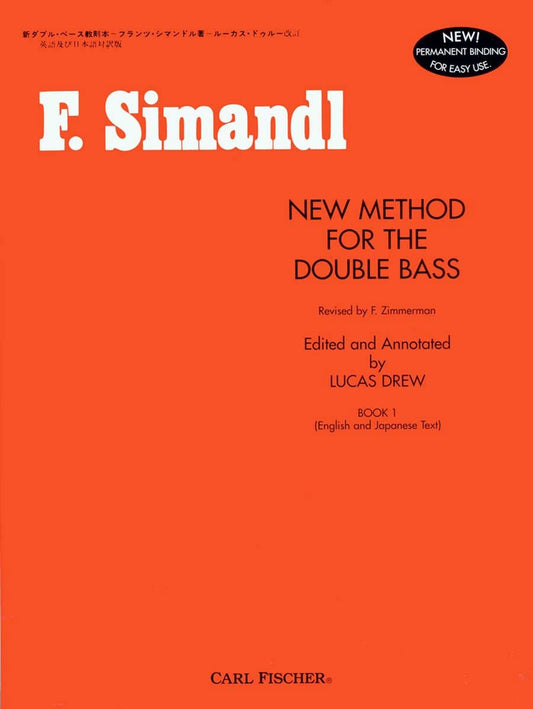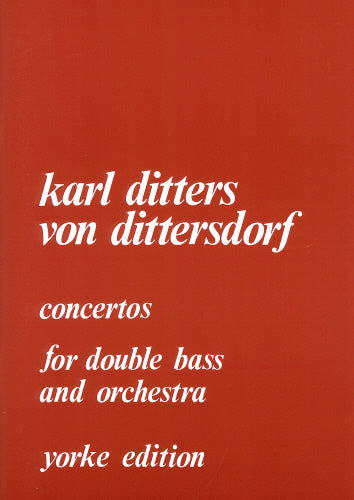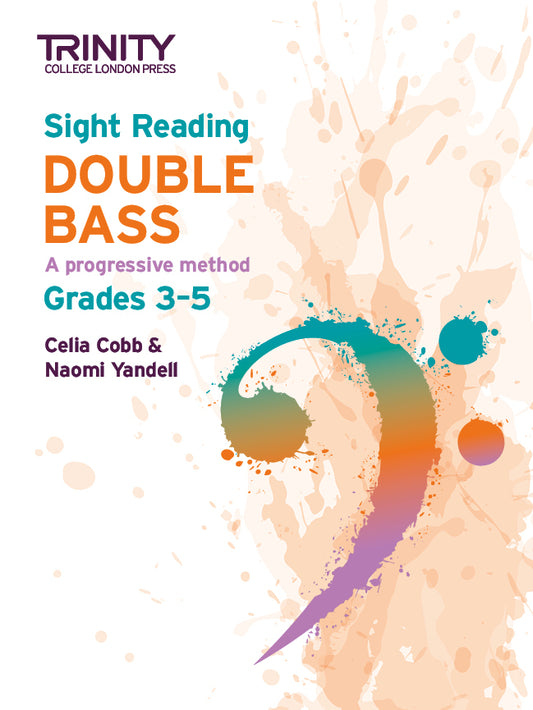-
Dragonetti 12 Waltzes Double Bass HN
Regular price £9.50Regular priceUnit price / per -
Faure Apres Un Reve Double Bass&Pno
Regular price £6.50Regular priceUnit price / per -
Carroll Three Pieces Double Bass FORSYT
Regular price £8.95Regular priceUnit price / per -
Bach Cello Suites arr Double Bass Vol 1 1-3 Edition Peters
Regular price £16.95Regular priceUnit price / per -
Grade by Grade Double Bass Grade 1 New E
Regular price £14.99Regular priceUnit price / per -
Hester The Bull Steps Out DB/Pno YE
Regular price £4.95Regular priceUnit price / per -
Stringtastic Bk2 Db
Regular price £8.99Regular priceUnit price / per -
Gabriel Marie La Cinquantaine DB/Pno BMP
Regular price £4.99Regular priceUnit price / per -
Yorke Studies Vol2 DB
Regular price £9.95Regular priceUnit price / per -
Jacob a Little Concerto DB&Sting Orch
Regular price £9.95Regular priceUnit price / per -
Yorke Solos for Double Bass/Piano Vol 1 Orange YE
Regular price £13.95Regular priceUnit price / per -
Walton A Deep Song Db/Pno YE
Regular price £4.50Regular priceUnit price / per -
Simandl New Method Double Bass Bk1 Red
Regular price £33.95Regular priceUnit price / per -
Gounod Funeral March Marionette DB FOR
Regular price £5.95Regular priceUnit price / per -
Really Easy Bass Bk Tony Osborne
Regular price £7.50Regular priceUnit price / per -
Dragonetti Three Waltzes DB&Pno
Regular price £3.95Regular priceUnit price / per -
Ridout Dance Preludes DB/Cello&Pno
Regular price £7.50Regular priceUnit price / per -
Handel Gamba Sonatas DB+Pno RM169
Regular price £9.99Regular priceUnit price / per -
Dittersdorf D-bass Concertos Nos1&2 YE
Regular price £19.95Regular priceUnit price / per -
TCL Sight Reading Double Bass Gr3-5
Regular price £15.45Regular priceUnit price / per
Collection: Sheet Music: Double Bass
Sheet music for double bass refers to musical notation specifically written for the double bass, a large string instrument in the orchestra. The bass is typically tuned in fourths (E-A-D-G), and its music is often written in bass clef, though tenor or treble clef may also be used in certain contexts, especially for higher registers.
History:
-
Early Beginnings: The double bass evolved from earlier string instruments like the violone, used in the 16th century, and the bass violin. Early sheet music for these instruments was often in a similar form to that used for violas and cellos.
-
18th Century: As the double bass gained popularity in orchestras and chamber music, composers began writing more specific parts for it. The music was typically written in bass clef, but due to the bass's vast range, some parts were written in higher clefs.
-
19th Century Onward: The double bass became more standardized, and as composers like Beethoven, Brahms, and Mahler wrote for it, specialized music for the instrument became more common. The evolution of its technique and role in orchestras contributed to the more complex and expressive sheet music we see today.
-
Modern Times: In the 20th century, composers further expanded the double bass’s role with more virtuosic solos and more intricate compositions, and new techniques, such as harmonics and extended bow strokes, were incorporated into the sheet music.
Today, double bass music can be found in orchestral scores, solo works, and various ensemble arrangements, with evolving techniques influencing its written notation.









